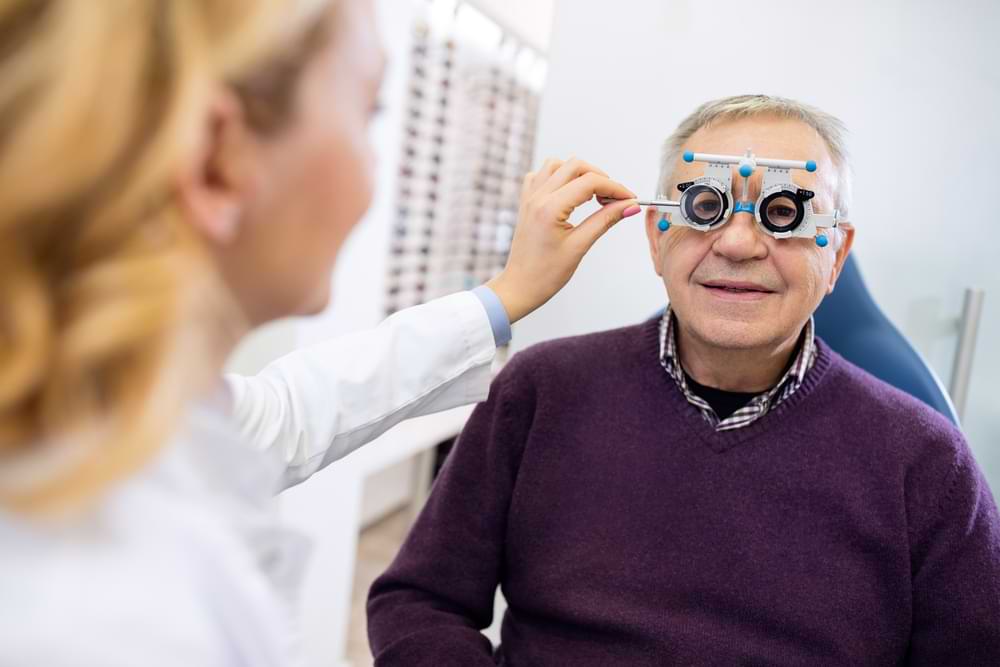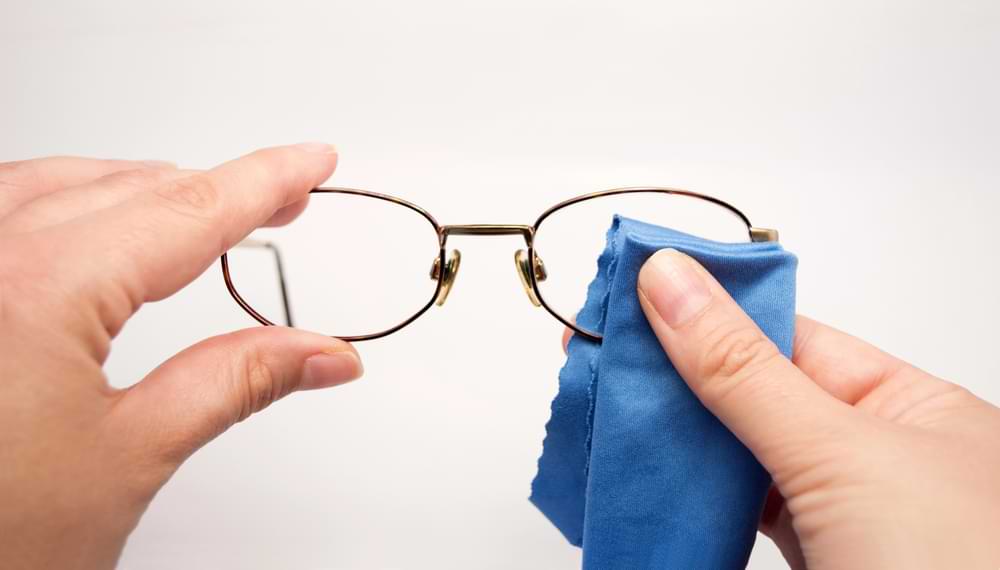How to Choose Prescription Lenses

Are you sure you’re wearing the right prescription lenses for your needs? Do you know how to choose the best lenses to enhance your vision and lifestyle? Expensive designer frames don’t necessarily equate to better quality eyewear. And not all lenses are created equal; different lens materials and coatings can make a big difference.
My name is Minh Van Tranh, the Owner and Principal Optometrist at VisionPros Optometrists. With over two decades of eye care experience, I understand the complexities of choosing the right prescription lenses. Whether you need single vision lenses or the latest in photochromic technology, I’m here to help you see better and live better.
Understanding lens options empowers you to make informed decisions for your long-term eye health. But not considering the best lens materials and coatings can leave your eyes vulnerable to damage. Your vision is too important to ignore — continue reading to learn about the different lens options that can make a big difference in your life.
KEY TAKEAWAYS
- Choosing the right prescription lenses involves understanding the differences between single vision, bifocal, and multifocal lenses.
- Lens materials such as glass, plastic, polycarbonate, high index, and Trivex each offer distinct advantages in terms of performance, durability, and comfort.
- Specialty lenses like photochromic, polarized, blue light, and drivewear lenses cater to specific needs and activities, enhancing vision and protection.
- Proper lens coatings, including anti-reflective, scratch-resistant, UV protection, anti-fog, and blue-light protective coatings, significantly enhance the functionality and durability of prescription lenses.
- Regular cleaning, safe storage, and routine eye exams are essential for maintaining lens clarity and ensuring your prescription remains accurate.
Understanding Different Types of Prescription Lenses
What makes one lens different from another? Choosing the right prescription lenses can be overwhelming given the variety of options available. Understanding the differences can help you make an informed decision tailored to your vision needs and lifestyle.
Single Vision Lenses are designed to correct one field of vision, either near or far. They’re commonly used for activities such as reading, driving, and computer work. If you need glasses primarily for one specific task, single vision lenses might be the best fit. They provide clear vision for one distance, making them ideal for specific activities where clarity at a single distance is crucial.
Bifocal Lenses address both near and far vision issues. These lenses have two distinct sections, each dedicated to a different focal point. The upper part of the lens helps with distance vision, while the lower part aids in near vision. This dual functionality can be particularly beneficial for those who struggle with both reading and seeing objects at a distance.
Multifocal (Progressive) Lenses offer a smooth transition between multiple focal points without the visible lines found in bifocal lenses. This design allows for a more natural vision correction experience. Progressive lenses are suitable for individuals who need correction for near, intermediate, and far distances, providing a seamless shift in focus as you move your eyes up and down the lens.
If you want to learn more about these different lens types, watch the following video from Dr Joseph Allen on the Doctor Eye Health channel.
Materials Used in Prescription Lenses
The material of your lenses significantly impacts their performance, durability, and comfort. Let’s explore the common materials used in prescription lenses and their benefits.
Glass Lenses provide excellent optical clarity and scratch resistance. However, they are heavier and more prone to shattering compared to other materials. While they offer superior vision quality, the weight and fragility make them less popular for everyday eyewear.
Plastic Lenses, such as CR-39, are lighter than glass and provide good optical quality. They are more affordable and can be easily coated with various protective layers. These lenses are a popular choice for everyday use due to their balance of weight, clarity, and cost-effectiveness.
Polycarbonate Lenses are known for their impact resistance, making them ideal for safety glasses, sports eyewear, and children’s glasses. They are thinner and lighter than standard plastic lenses, providing comfort and durability. Polycarbonate lenses also offer UV protection, shielding your eyes from harmful ultraviolet rays.
High Index Lenses are designed for individuals with strong prescriptions. They are thinner and lighter than traditional lenses, offering the same vision correction without the bulk. High index lenses provide a more aesthetically pleasing look by reducing the “coke bottle” effect often seen with high prescriptions.
Trivex Lenses combine the impact resistance of polycarbonate with superior optical clarity. They are lightweight, durable, and provide excellent vision quality. Trivex lenses are a great choice for those seeking a balance between strength and visual performance.
Specialty Lenses for Different Needs
Selecting the right specialty lenses can enhance your vision in specific environments and activities. Here’s a closer look at some options tailored to various needs.
Photochromic (Transition) Lenses adapt to changing light conditions, darkening in bright sunlight and clearing up indoors. These lenses are perfect for those who frequently move between different lighting environments, offering convenience and protection from UV rays without the need for separate sunglasses.
Polarized Sunglasses Lenses reduce glare from reflective surfaces like water, snow, and glass. They enhance vision clarity and comfort during outdoor activities, making them ideal for driving, fishing, and skiing. By cutting through glare, polarized lenses improve contrast and reduce eye strain.
Blue Light Lenses protect your eyes from the harmful effects of digital screens. With the increasing use of computers, tablets, and smartphones, blue light lenses help reduce digital eye strain, improve sleep quality, and prevent potential long-term damage from prolonged exposure to blue light.
Drivewear Lenses are specifically designed for driving, combining photochromic and polarized technologies. These lenses adapt to varying light conditions encountered while driving and reduce glare from the road and other vehicles. They enhance visual clarity and safety during daytime driving.

Matching Lens Types to Vision Problems
Choosing the correct lens type based on your specific vision problem ensures optimal visual clarity and comfort. Here’s a guide to matching lens types to common vision issues.
Nearsightedness (Myopia) is where distant objects appear blurry, in which case single vision lenses are often recommended. These lenses help to focus distant objects clearly. High index lenses can also be beneficial for myopia, as they are thinner and lighter, especially for stronger prescriptions.
Farsightedness (Hyperopia) makes near objects appear blurry, while distant objects are clear. Single vision lenses can correct this by providing the necessary focusing power for close-up tasks. High index lenses are also suitable for hyperopia, providing a comfortable and aesthetically pleasing option for higher prescriptions.
Astigmatism, characterized by an irregularly shaped cornea, can cause blurred or distorted vision at all distances. Toric lenses are specifically designed to address astigmatism, providing precise correction. These lenses can be made from various materials, including polycarbonate and high index, to suit individual needs.
Presbyopia, a condition that affects near vision as you age, typically requires multifocal solutions. Bifocal lenses are a traditional option, offering two distinct focal points for near and far vision. Progressive lenses, however, provide a seamless transition between multiple focal points, making them a popular choice for those seeking a more natural visual experience. Free form multifocal lenses take this a step further, offering reduced distortions and wider visual fields for enhanced clarity.
Key Metrics to Consider When Choosing Lenses
When selecting prescription lenses, understanding key metrics can help you make an informed decision for optimal vision and comfort.
Refraction Index measures how efficiently a lens material bends light. Lenses with a higher refraction index can correct vision with less material, resulting in thinner and lighter lenses. High index lenses are ideal for strong prescriptions, reducing lens thickness without compromising clarity.
Abbe Value indicates a lens material’s dispersion, which affects visual clarity and colour dispersion. Higher Abbe values mean less chromatic aberration, leading to sharper vision and better colour fidelity. Materials like Trivex and standard plastic have higher Abbe values, providing clearer and more comfortable vision.
Lens Coatings: Overview
Choosing the right lens coatings can greatly enhance your visual experience and the durability of your prescription lenses. Here’s a quick look at some essential coatings and their benefits:
- Anti-Reflective Coating: Reduces glare and unwanted reflections, improving clarity and reducing eye strain, especially in bright environments or at night.
- Scratch-Resistant Coating: Adds a layer of protection to your lenses, making them more durable against everyday wear and tear.
- UV Protection Coating: Shields your eyes from harmful UV rays, reducing the risk of eye conditions like cataracts.
- Anti-Fog Coating: Prevents lenses from fogging up, ensuring clear vision in varying temperatures and humidity levels.
- Blue-Light Protective Coating: Filters out high-energy blue light from digital screens, reducing eye strain and improving comfort during screen time.
- Water Resistance Coating: Repels moisture, preventing water droplets from forming and keeping your vision clear in rainy or humid conditions.
- Mirror Coating: Provides a stylish, reflective appearance and reduces light entering the eyes, useful in bright conditions.
- Multi-Coating: Combines several benefits such as anti-reflective, scratch-resistant, and UV protection into one comprehensive solution for optimal lens performance.
Read Our In-Depth Guide on Lens Coatings

Maintaining and Caring for Your Lenses
Proper care and maintenance of your prescription lenses ensure they remain clear and effective for as long as possible. Here are some essential tips.
Cleaning Tips
Regular cleaning prevents smudges and buildup that can impair vision. Use a microfiber cloth and lens cleaner specifically designed for eyeglasses. Avoid using tissues, paper towels, or clothing, as they can scratch the lenses. For a thorough clean, rinse your lenses under lukewarm water before wiping them dry. This helps remove dust and debris that might scratch the surface.
Storage Solutions
When not in use, store your glasses in a protective case to prevent scratches and damage. Avoid placing them face down on any surface. For those who frequently remove their glasses, a hard-shell case is ideal for protection during travel or daily commutes.
Regular Eye Exams
Regular eye exams are crucial for ensuring your prescription remains accurate. Over time, your vision needs may change, requiring adjustments to your lenses. Keeping up with eye exams helps maintain optimal vision and allows your optometrist to check for any eye health issues.
Proper maintenance and regular check-ups are key to extending the life of your lenses and ensuring they provide the best possible vision correction. Investing a little time in caring for your lenses can save you from frequent replacements and ensure clear vision every day.
Frequently Asked Questions About Prescription Lenses
How Often Should I Update My Prescription?
It’s generally recommended to update your prescription every one to two years. Regular updates ensure that your lenses provide optimal vision correction and that any changes in your vision are promptly addressed. Regular eye exams also help in detecting potential eye health issues early.
What Are the Best Lenses for Sports?
For sports, polycarbonate lenses are an excellent choice due to their impact resistance and lightweight nature. They provide the necessary durability and protection, making them ideal for high-intensity activities. Additionally, polarized lenses can reduce glare, enhancing visual clarity in outdoor sports.
Can I Use My Old Frames with New Lenses?
Yes, you can often use your old frames with new lenses, provided the frames are in good condition. It’s a practical way to upgrade your vision without needing to invest in new frames. However, your optometrist will need to inspect the frames to ensure they can accommodate the new lenses.
CONCLUSION
Understanding the various types of prescription lenses, from single vision to multifocal, helps you choose the best option for your vision needs. The material of your lenses, such as polycarbonate or high-index plastic, plays a crucial role in comfort, durability, and visual clarity. Also, keep in mind that specialty lenses like photochromic and polarized sunglasses lenses offer specific benefits for different lifestyles and activities.
It is worth understanding the different options because wearing incorrect lenses might exacerbate vision problems over time, impacting your overall eye health. Take control of your eye health by updating your prescription lenses; a consultation with VisionPros can pave the way for clear vision tomorrow.
Scheduling an eye exam appointment is the first step.
Click on the “BOOK AN APPOINTMENT” button OR call either our St. Albans (03) 9364 5509 or Footscray ((03) 9687 8787 optometry practices.

Minh gained his Bachelor of Optometry in 2000, and his Certificate in Ocular Therapeutics (ACO) in 2016.
He started VisionPro Optometrists in 2008 and has been Principal Optometrist ever since, working in both the Footscray and the St Albans practices.
Minh is a member of Optometrist Association Australia and the ACO. He always strives to achieve the highest standard of professionalism when delivering eyecare to all his patients.
Minh’s special areas of interest include ocular diseases and management, children’s vision and contact lens fitting. Minh enjoys travelling and reading in his spare time.
